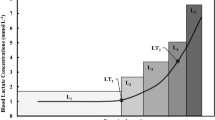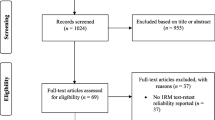Abstract
Objective measures of tongue strength and endurance are used to assess lingual weakness and fatigue, and may have significant clinical value for dysphagia management. Recent studies investigating age and gender effects on tongue strength in children are limited by small sample sizes. The current study investigated age and gender effects on tongue strength with a larger sample size, and collected preliminary normative data for a paediatric population. This study also investigated the reliability of tongue endurance measures in children using a modified method, which has not previously been investigated. Using a cross-sectional design, this study examined tongue strength and endurance in 119 children aged 6 to 11 years, with no history of speech sound disorders, oro-motor deficits, dysphagia or cognitive impairment. Measures were collected using the Iowa Oral Performance Instrument. Children participated in two sessions, 45 min and 10 min in duration. Tongue strength was found to significantly increase with age (p < 0.001), while no gender effects were found. Modified tongue endurance measures involved using only one measure of maximal tongue strength to set parameters for tongue endurance scores. Despite this modification, data did not reach acceptable test–retest reliability, ICC = 0.68, p < 0.001; however, reliability improved from previous studies. These findings provide normative data for tongue strength, as a basis to compare individuals, and highlights the need for more reliable protocols for measuring tongue endurance. Normative data was collected from city-dwelling Australian children.


Similar content being viewed by others
References
Jones B. Normal and abnormal swallowing: imaging in diagnosis and therapy. 2nd ed. New York: Springer; 2003.
Matsuo K, Palmer JB. Anatomy and physiology of feeding and swallowing: normal and abnormal. Phys Med Rehabil Clin N Am. 2008;9:691–707.
Charpentier A, Morgan S, Harding C. A service evaluation of parent adherence with dysphagia management therapy guidelines: reports from family carers supporting children with complex needs in Greece. Disabil Rehabil. 2018;17:1–8.
van den Engel-Hoek L, Harding C, van Gerven M, Cockerill H. Pediatric feeding and swallowing rehabilitation: an overview. J Pediatr Rehabil Med. 2017;10:95–105.
Solomon NP. Assessment of tongue weakness and fatigue. Int J Orofac Myol. 2004;30:8–19.
Ono T, Hori K, Tamine K, Maeda Y. Evaluation of tongue motor biomechanics during swallowing: from oral feeding models to quantitative sensing methods. Jpn Dent Sci Rev. 2009;45:65–74.
Clark H, Henson P, Barber W, Stierwalt J, Sherrill M. Relationships among subjective and objective measures of tongue strength and oral phase swallowing impairments. Am J Speech-Lang Pathol. 2003;12:40–50.
Olswang LB, Bain BA. Data collection: Monitoring children’s treatment progress. Am J Speech-Lang Pathol. 1994;3:55–66.
Adams V, Mathisen B, Baines S, Lazarus C, Callister R. Reliability of measurements of tongue and hand strength and endurance using the Iowa Oral Performance Instrument with healthy adults. Dysphagia. 2014;29:83–95.
Neel AT, Palmer PM, Sprouls G, Morrison L. Muscle weakness and speech in oculopharyngeal muscular dystrophy. J Speech-Lang Hear Res. 2015;58:1–12.
Vitorino J. Effect of age on tongue strength and endurance scores of healthy Portuguese speakers. Int J Speech-Lang Pathol. 2010;12:237–43.
Clark H, O'Brien K, Calleja A, Corrie S. Effects of directional exercise on lingual strength. J Speech Lang Hear Res. 2009;52:1034–47.
Oh J. Effects of tongue strength training and detraining on tongue pressures in healthy adults. Dysphagia. 2015;30:315–20.
Steele C, Bayley M, Peladeau-Pigeon M, Nagy A, Namasivayam A, Stokely S, Wolkin T. A randomized trial comparing two tongue-pressure resistance training protocols for post-stroke dysphagia. Dysphagia. 2016;31:452–61.
Potter N, Short R. Maximal tongue strength in typically developing children and adolescents. Dysphagia. 2009;24:391–7.
Song Y. Characteristics of maximal tongue and lip strength scores according to age group in typically developing Korean children. Int J Adv Sci Technol. 2015;103:176–9.
Gross MT. The need for replication studies—is it really a done deal? J Orthop Sports Phys Ther. 1997;25:161–2.
Harding C, Aloysius A. Drinking speed using a valved Pat Saunders straw, wide bore straw and a narrow bore straw in school-age children. Int J Evid-Based Healthc. 2011;9:435–9.
Lambertz D, Grosset J, Pérot C, Mora I. Evaluation of musculotendinous stiffness in prepubertal children and adults, taking into account muscle activity. J Appl Physiol. 2003;95:64–72.
Stoppani J. Jim Stoppani’s encyclopedia of muscle & strength. Champaign: Human Kinetics; 2014.
Hanson ML, Mason RM. Orofacial myology: international perspectives. Springfield: Charles C Thomas Publisher; 2003.
Falk B, Usselman C, Dotan R, Brunton L, Klentrou P, Shaw J, Gabriel D. Child–adult differences in muscle strength and activation pattern during isometric elbow flexion and extension. Appl Physiol Nutr Metab. 2009;34:609–15.
Asmussen E, Heeboll-Nielsen K. A dimensional analysis of physical performance and growth in boys. J Appl Physiol. 1955;7:593–603.
Dotan R, Mitchell C, Cohen R, Klentrou P, Gabriel D, Falk B. Child–adult differences in muscle activation: a review. Pediatr Exerc Sci. 2012;24:2–21.
Youmans S, Stierwalt J. Measures of tongue function related to normal swallowing. Dysphagia. 2006;21:102–11.
Nicosia MA, Hind JA, Roecker EB, Carnes M, Doyle J, Dengel GA, Robbins J. Age effects on the temporal evolution of isometric and swallowing pressure. J Gerontol. 2000;55:634–40.
Utanohara Y, Hayashi R, Yoshikawa M, Yoshida M, Tsuga K, Akagawa Y. Standard values of maximum tongue pressure taken using newly developed disposable tongue pressure measurement device. Dysphagia. 2008;23:286–90.
Vanderwegen J, Guns C, Van Nuffelen G, Elen R, De Bodt M. The influence of age, sex, bulb position, visual feedback, and the order of testing on maximum anterior and posterior tongue strength and endurance in healthy Belgian adults. Dysphagia. 2013;28:159–66.
Crow HC, Ship JA. Tongue strength and endurance in different aged adults. J Gerontol. 1996;51:247–50.
Miller J, Macedonia C, Sonies B. Sex differences in prenatal oral-motor function and development. Dev Med Child Neurol. 2006;48:465–70.
Smith A, Zelaznik H. Development of functional synergies for speech motor coordination in childhood and adolescence. Dev Psychobiol. 2004;45:22–33.
Solomon NP, Robin DA, Luschei ES. Strength, endurance, and stability of the tongue and hand in Parkinson disease. J Speech Lang Hear Res. 2000;43:256–67.
Adams V, Mathisen B, Baines S, Lazarus C, Callister R. Reliability of measurements of tongue and hand strength and endurance using the Iowa Oral Performance Instrument with elderly adults. Disabil Rehabil. 2015;37:389–95.
Bradford A, Murdoch B, Thompson E, Stokes P. Lip and tongue function in children with developmental speech disorders: a preliminary investigation. Clin Linguist Phon. 1997;11:363–87.
Murdoch BE, Attard MD, Ozanne AE, Stokes PD. Impaired tongue strength and endurance in developmental verbal dyspraxia: a physiological analysis. Eur J Disord Commun. 1995;30:51–64.
Dodd B, Hua Z, Crosbie S, Holm A, Ozanne A. Diagnostic evaluation of articulation and phonology. London: Psychological Corporation; 2002.
Chirlian NS, Sharpley CF. Children's articulation development: Some regional differences. Aust J Hum Commun Disord. 1982;10:23–30.
Kays S, Hind J, Gangnon R, Robbins J. Effects of dining on tongue endurance and swallowing-related outcomes. J Speech Lang Hear Res. 2010;53:898–907.
Palmer JB. Evaluation of swallowing disorders. In: Grabois M, Garrison SJ, Hart KA, Lehmkuhl LD, editors. Physical medicine, rehabilitation: the complete approach. 1st ed. Massachusetts: Blackwell Publishing; 1999. p. 277–290.
Shrout PE, Fleiss JL, Hernstein RJ. Intraclass correlations: uses in assessing rater reliability. Psychol Bull. 1979;86:420–8.
IBM Corp. Released 2017. IBM SPSS statistics for windows, version 25.0. Armonk, NY: IBM Corp.
Zumbo B, Jennings M. The robustness of validity and efficiency of the related samples t-test in the presence of outliers. Psicológica. 2002;23:415–50.
Author information
Authors and Affiliations
Corresponding author
Ethics declarations
Ethical Standards
All procedures performed in studies involving human participants were in accordance with the ethical standards of the institutional and/or national research committee and with the 1964 Helsinki declaration and its later amendments or comparable ethical standards.
Informed Consent
Informed consent was obtained from all individual participants included in the study.
Additional information
Publisher's Note
Springer Nature remains neutral with regard to jurisdictional claims in published maps and institutional affiliations.
Appendix: Semi-structured Script Used for Tongue Strength and Endurance Tasks
Appendix: Semi-structured Script Used for Tongue Strength and Endurance Tasks
I’m going to see you twice today. The second time I see you will be later in the day. In these sessions you will be naming pictures and moving your tongue in different ways. Then I’m going to put a small bulb in your mouth, which you’ll push your tongue against. This will let us see how strong your tongue is. Do you want to do this? You can stop at any point if you change your mind, without getting into trouble. You can also ask any questions you want.
Tongue Strength Task
I’m going to put this bulb in your mouth, just behind your front teeth. When I say go I want you to push your tongue against it as hard as you can for 2 s. We’re going to do this 6 times. I’ll give you a rest in between, because your tongue might get tired. Remember to only use your tongue and not your teeth.
Tongue Endurance Task
When I put the bulb in your mouth this time, you’re going to push your tongue against the bulb until the light goes green. I want you to try to keep the light green for as long as you can. If the light goes to red you have to push a bit harder and get it back up to green. Remember to only use your tongue and not your teeth.
Rights and permissions
About this article
Cite this article
McKay, R., Smart, S. & Cocks, N. Investigating Tongue Strength and Endurance in Children Aged 6 to 11 Years. Dysphagia 35, 762–772 (2020). https://doi.org/10.1007/s00455-019-10081-2
Received:
Accepted:
Published:
Issue Date:
DOI: https://doi.org/10.1007/s00455-019-10081-2




